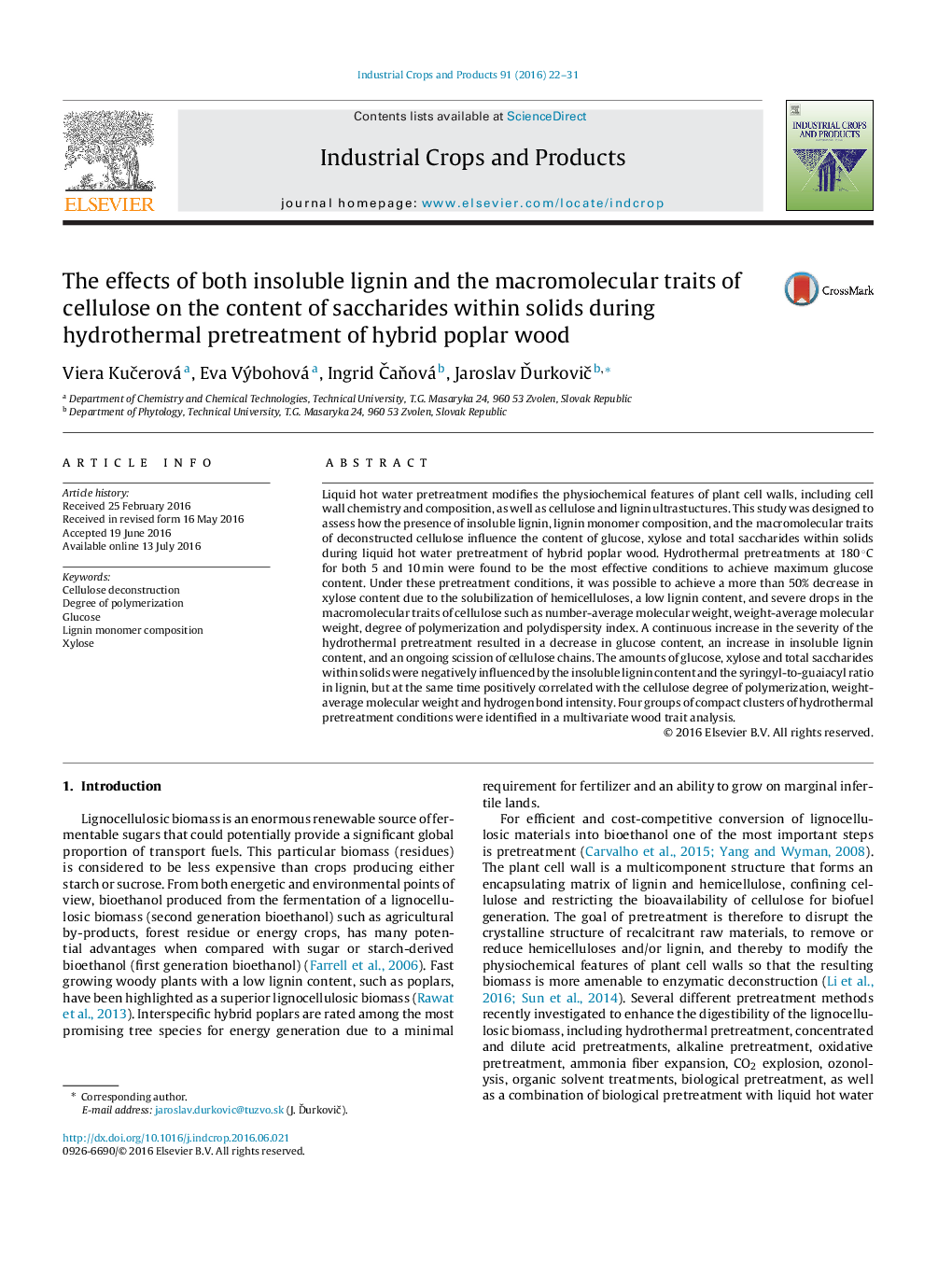| Article ID | Journal | Published Year | Pages | File Type |
|---|---|---|---|---|
| 4511983 | Industrial Crops and Products | 2016 | 10 Pages |
•This study evaluated hydrothermal preatreatments of hybrid poplar wood used as a feedstock.•The amounts of saccharides found within solids were negatively affected by the lignin content.•Deconstruction of cellulose facilitated the solubilization of hemicelluloses.•The highest glucose content was associated with a cluster formed by both 5 and 10 min pretreatments at 180 °C.
Liquid hot water pretreatment modifies the physiochemical features of plant cell walls, including cell wall chemistry and composition, as well as cellulose and lignin ultrastuctures. This study was designed to assess how the presence of insoluble lignin, lignin monomer composition, and the macromolecular traits of deconstructed cellulose influence the content of glucose, xylose and total saccharides within solids during liquid hot water pretreatment of hybrid poplar wood. Hydrothermal pretreatments at 180 °C for both 5 and 10 min were found to be the most effective conditions to achieve maximum glucose content. Under these pretreatment conditions, it was possible to achieve a more than 50% decrease in xylose content due to the solubilization of hemicelluloses, a low lignin content, and severe drops in the macromolecular traits of cellulose such as number-average molecular weight, weight-average molecular weight, degree of polymerization and polydispersity index. A continuous increase in the severity of the hydrothermal pretreatment resulted in a decrease in glucose content, an increase in insoluble lignin content, and an ongoing scission of cellulose chains. The amounts of glucose, xylose and total saccharides within solids were negatively influenced by the insoluble lignin content and the syringyl-to-guaiacyl ratio in lignin, but at the same time positively correlated with the cellulose degree of polymerization, weight-average molecular weight and hydrogen bond intensity. Four groups of compact clusters of hydrothermal pretreatment conditions were identified in a multivariate wood trait analysis.
